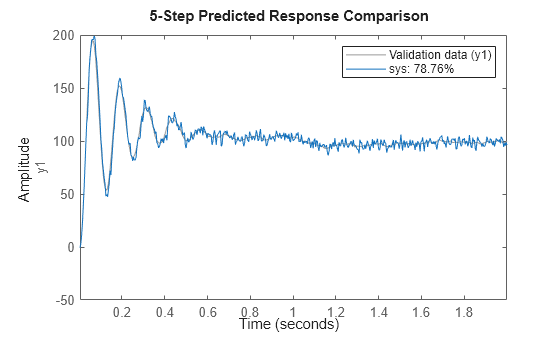ar
Estimate parameters when identifying AR model or ARI model for scalar time series
Syntax
Description
sys = ar(y,n,___,Name,Value)'IntegrateNoise',1 estimates an ARI model, which is
useful for systems with nonstationary disturbances. Specify Name,Value
after any of the input argument combinations in the previous syntaxes.
Examples
Input Arguments
Name-Value Arguments
Output Arguments
More About
Algorithms
AR and ARI model parameters are estimated using variants of the least-squares method. The
following table summarizes the common names for methods with a specific combination of
approach and window argument values.
| Method | Approach and Windowing |
|---|---|
| Modified covariance method | (Default) Forward-backward approach with no windowing |
| Correlation method | Yule-Walker approach with prewindowing and postwindowing |
| Covariance method | Least squares approach with no windowing. arx uses this
routine |
References
[1] Marple, S. L., Jr. Chapter 8. Digital Spectral Analysis with Applications. Englewood Cliffs, NJ: Prentice Hall, 1987.

